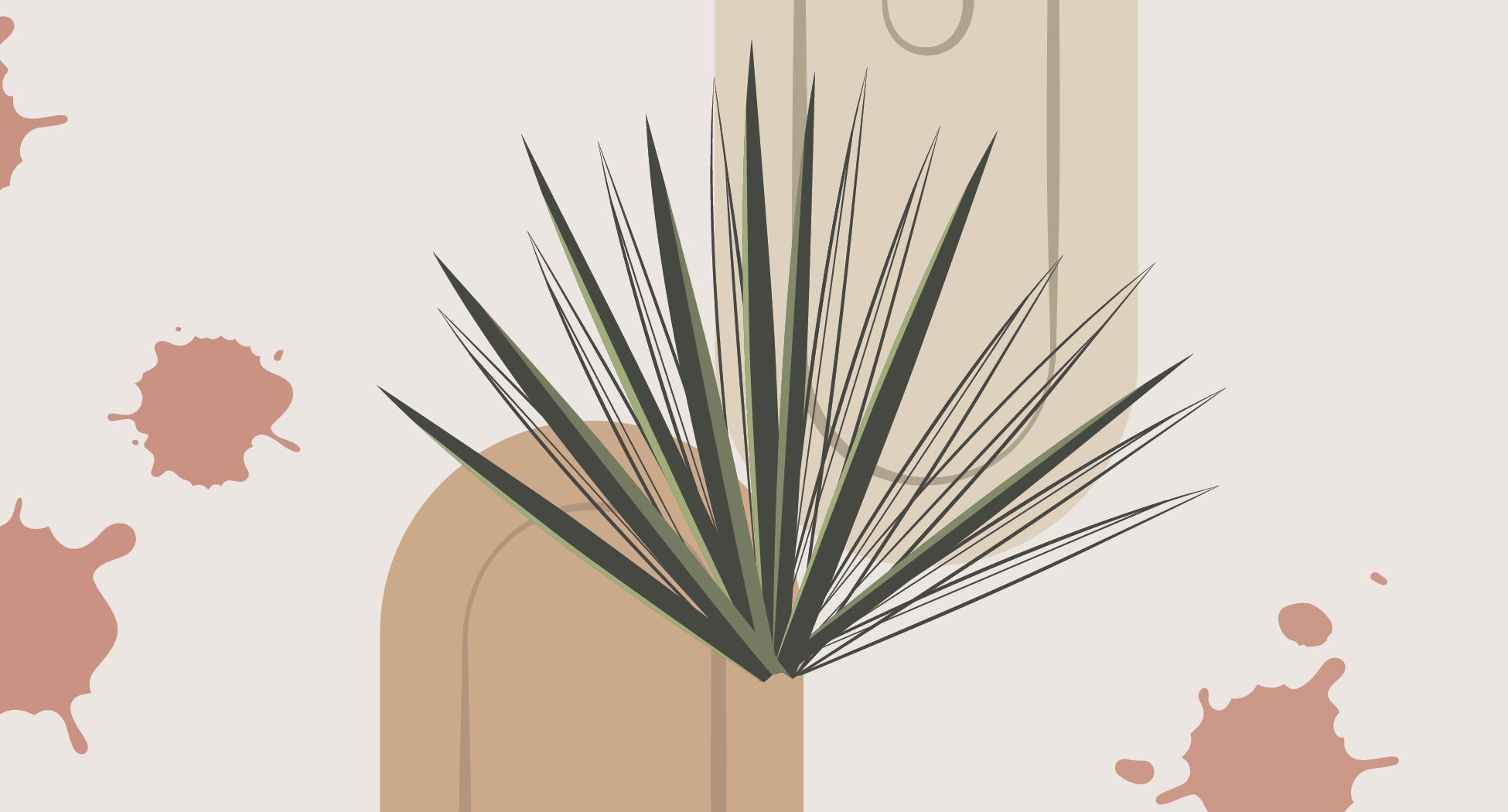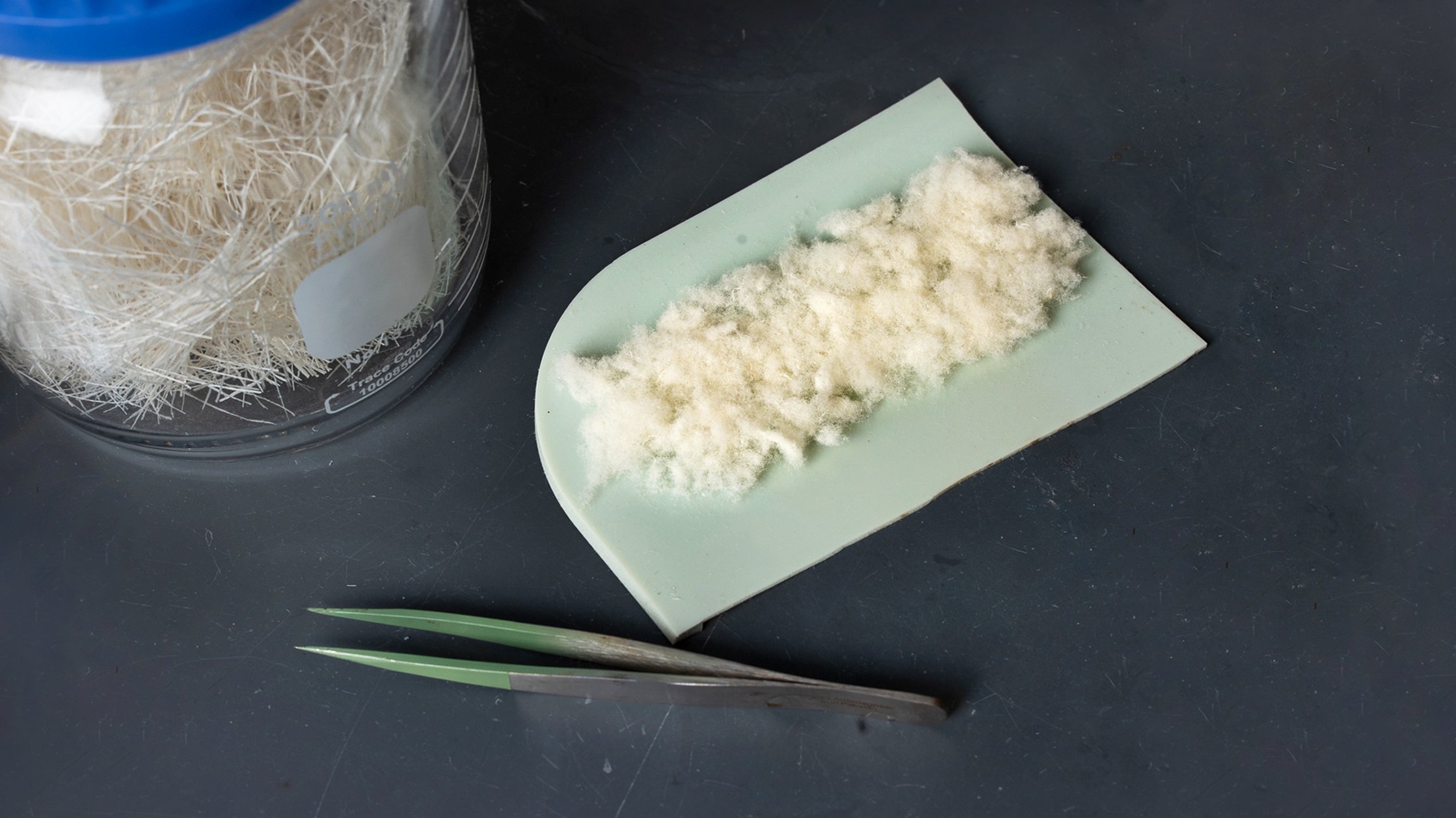Millions of women and girls around the world lack the means to manage their menstruation leading to unequal social and economic outcomes.
What is PlantPad?
Access to products like disposable sanitary pads can help reduce this inequality. We are doing science that can improve access to menstrual health products. But we can't do this alone. Ultimately, we would like to seed a community around this issue. We believe a small but important step forward is to open up our process. We are not necessarily experts in all areas of this work - nobody is - but we are curious.
sisal fibers and fluff pulp; photo credit: Andrew Brodhead/Stanford University
We began nearly two years ago by dissecting a number of commercial pads to understand their composition and construction. A surprising realization was a lack of transparency around the raw material from which a typical disposable menstrual pad is constructed. However, we hold a conviction that a disposable menstrual pad ought to be composed of natural, compostable materials. Further, the composition of these materials should be totally transparent. Our guiding principle has been that plants contain all the necessary raw materials to construct a quality menstrual pad. They need only be rearranged. Until now, we have focused on the production of absorbent materials from diverse sources of lignocellulosic biomass. We have shown that the succulent agave sisalana can be readily converted into a high performance absorbent material. We suspect the remaining materials can also be obtained from this plant.
This work has led us to form a consortium made of researchers, entrepreneurs, and tool builders.
Read more about our consortium here.
This journey has led us to meet many people who share this belief. We have met entrepreneurs who have made it their life's work to do more locally available bioresources. We have met fellow scientists interested in understanding the engineering principles from which we can make ever more sophisticated materials and products. We have met pioneers in social business that are trying to bring healthy and sustainable products into the hands of more women.
(Read more about our work here)
sisal fluff pulp before absorption test; photo credit: Andrew Brodhead/Stanford University
By carrying out our future work in an open and transparent fashion, we hope to not only to strengthen the ongoing dialogue but also to invite others to join and follow. Our immediate goal will be to develop a complete pad. But we hope that this open approach might inspire others working on adjacent goals such the development and adoption of standards or research and development of reusable menstrual products. Open software development has long lived by Linus' law that "given enough eyeballs, all bugs are shallow", we hope a similar approach might apply to more tangible problems.
menstrual pad using sisal fluff as absorbent core material; photo credit: Prakash Lab
PlantPad Core Team
Hello! We are a team of scientists, researchers, and designers within Prakash Lab at Stanford University who are invested into material science and exploration but also into democratizing products and science through what we call Frugal Science. The PlantPad project came to life through a call for action toward improving menstrual health and reducing global period poverty. We have since engaged in discussions with a number of fellow researchers and social entrepreneurs aiming to tackle the same issues and collaborated with an agricultural entrepreneur in Kenya who has a deep connection with sisal production and its bioeconomy.
If you’re excited about the project and would like to receive updates on the project or have project suggestions/ connections, please let us know in the form below.
PI: Manu Prakash, PhD
Alex Odundo
(Olex Techno Enterprises)
Hadil Habashneh, MS
Anton Molina, PhD
Anesta Kothari, MDE
Hope T. Leng, BS










